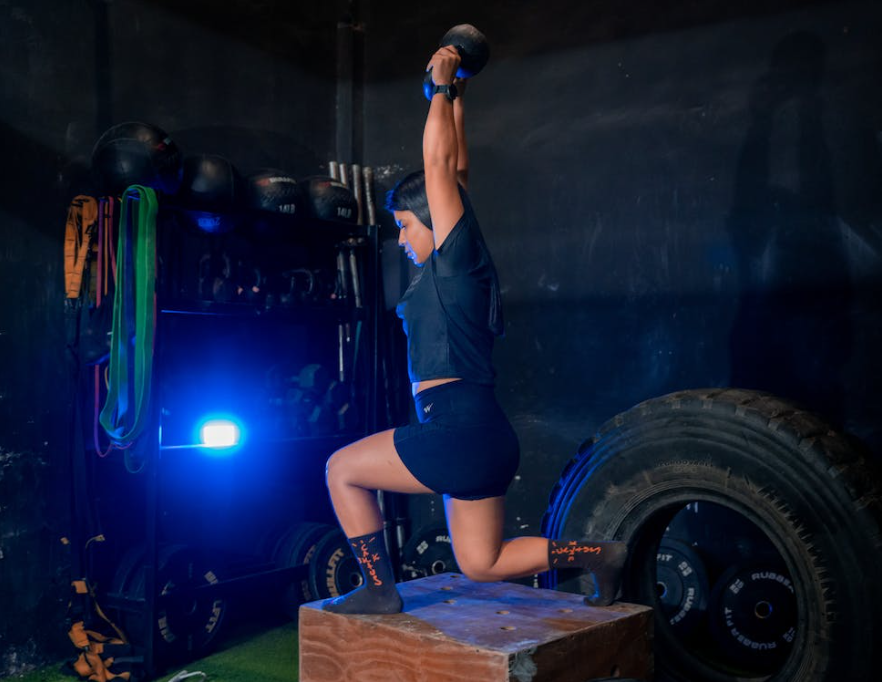For many of us who consistently go to the gym, building strength and muscle is the goal that we’re working to achieve.
To make the most progress in your fitness journey, it’s essential for you to understand the concept of progressive overload.
Progressive overload is the foundation for growing muscle and building strength when working out. It becomes especially essential for anyone looking to make consistent progress in the gym.
In this post, I’m going to cover everything you need to know about progressive overload. What progressive overload is, why it matters, and how you can start incorporating it into your own workout routine.
What is progressive overload?
To begin, let’s cover what progressive overload even is.
Progressive overload is the practice of gradually increasing the stress you put on your muscles over time.
There are a few different strategies you can use to increase this stress on your muscles.
For example, some people might increase the weight they use or increase the number of reps they do.
Or some people might do other types of variations of workouts to add additional stress to their muscles.
The main goal of progressive overload is to continually challenge your muscles more and more. The more you push your muscles, the more they’ll adapt and the stronger they’ll grow in response.
Why does progressive overload work
We know that our muscles are designed to adapt and grow to the more stress we put on them.
The more you challenge your muscles, pushing them beyond what they’re currently capable of, the more you can trigger the muscle building process within your body.
By triggering this process, it stimulates within your body the development and production of new muscle fibers, an increase in protein synthesis, and improvement in neuromuscular coordination, which is the connection between your brain and your muscles.
As time goes on, this will lead to the development of new muscle tissue.
This new muscle tissue will then lead to increased muscle size and increased strength. Both of which we’re looking to get from working out.
Why you should implement progressive overload

There are many reasons why you should begin to implement progressive overload into your routine. The main reasons are:
1. Increased muscle growth
The main goals we have when lifting weights are to either put on strength or size. Progressive overload is what’s essential for your muscles to grow larger and stronger. This is especially true as you become more mature in the gym.
Because of this, it seems like a no brainer for us to use this style of training.
Additionally, you need progressive overload if you’re training for hypertrophy, which is the process of your muscles growing.
Without implementing progressive overload and hypertrophy, you can’t grow your muscles to their fullest potential. Meaning your muscles will grow much less than they otherwise would.
2. Increased strength
When we’re trying to gain strength it’s simple; the more we push our muscles, the stronger they’ll become.
Progressive overload is essential to increase your strength at the fastest rate. By challenging yourself more and more every week, or periodically, your muscles are sure to adapt and grow.
The more your muscles grow, the stronger they’re going to be.
3. Progressive overload helps prevent plateaus
One of the worst parts about consistently lifting is hitting a plateau.
A plateau is that familiar feeling when you think everything is going great and you’ve been making huge progress. Then suddenly, out of nowhere, you stop making any progress at all.
Well, you’re actually still making progress. But, it feels like you aren’t making any progress, which is the absolute worst. You feel like all your hard work isn’t going anywhere.
Plateaus usually occur when your progress stalls, which is what makes it feel like you stop making progress altogether for the time being.
But, by continually pushing yourself more and more, it’s as if you’re forcing your muscles to make progress. Pushing yourself gives your muscles no choice but to rise up to the challenge you’re putting on them.
However, even with progressive overload, you can still hit plateaus. They’ll just happen much less often and be much easier to get out of.
How to implement progressive overload

In the gym, volume is known as the combination of sets, reps, and weight for your workouts. Increasing any of these is what increases the volume of your workouts.
So, when you are training for progressive overload, the goal is to be increasing the volume of your workouts periodically over a certain increment of time.
Here are some of the strategies you should be using to increase the volume of your workouts and train for progressive overload:
1. Increase the weight of your lifts
One way to start implementing progressive overload is to continually increase the weight of your lifts little by little.
This means that every week or two (or whatever increment of time you may choose) you want to try and lift heavier than you lifted the week before.
For example, if you squatted 135 pounds the week before, then in two weeks you’ll want to start squatting 140 pounds.
The reason you want to keep increasing the weight is because as you build muscle, you’re going to get stronger. So, you need to continually increase the weight to make sure that your muscles are still be challenged the same way that they were, despite getting stronger.
Over time, you’ll need to wait longer to increase the weight as things get heavier, but initially you should look to increase the weight about every two weeks.
2. Add more reps to your exercises
Another way to progressively overload and increase the volume of your workouts is to increase the number of reps you’re doing each set for each exercise.
For example, if you usually do 8 reps per set, you might want to try increasing to 10-12 reps each set.
Whatever number you may be increasing to, you want to make sure that the weight is heavy enough so you’re training with intensity.
By doing this, you don’t want to decrease the weight to make sure you can increase the reps of your workouts. You want to increase the reps so you’re training either all the way to failure, or as close to failure as possible.
This will give you the most progress in the gym.
3. Vary your exercises
One of the best strategies to make the most progress and create evenly balanced muscles is to vary the exercises you use to target each muscle group.
By switching up the exercises you do, you can do different weights and number of reps to add to your increase in volume.
This works because using different exercises to target the same muscle group, works the muscle group differently.
Then, this will bias different areas of the muscle and becomes essential for well-rounded, muscle growth.
4. Give yourself time to rest and recovery
Because progressive overload requires you to be training so intensely, you’re going to want to make sure you’re getting enough rest in between your workouts.
Rest is when you’re muscles grow, so I recommend taking at least 1 to 2 rest days per week.
I also like to make sure I give myself at least 48 hours of rest in between training a specific muscle group.
For example, if I train quads on Monday, I try to wait until at least Thursday to train quads again.
This gives my body enough time to fully heal, especially if I’m really sore, before resuming training with such high intensity.
What you can do now
Track your progress
When you’re training for progressive overload, it’s really important that you track your progress and your workouts.
You can either do this in your head like I try to do, or you can use a training log.
By using a training log, you can write down the number of exercises, sets, reps, and weights that you do every workout.
This is how you’ll be able to record and know how much you should be improving and increasing you workouts by each week.
This also allows you to actually see your progress written down. Which comes in handy if it feels like you’re getting stuck, you’ll have the evidence right in front of you showing otherwise.
Remember, the goal with progressive overload is to consistently challenge your muscles in order to make the most gains and development.
As always with working out, patience and consistency are key.
Go easy on yourself if things feel like they’re taking a long time, progress can be slow. Just remember to keep showing up and pushing yourself everyday.
[convertkit form=6036486]
You are so interesting! I don’t believe I’ve read anything like this before.
So nice to discover someone with some unique thoughts on this
topic. Really.. thanks for starting this up. This web site is something that is needed on the
web, someone with a bit of originality!